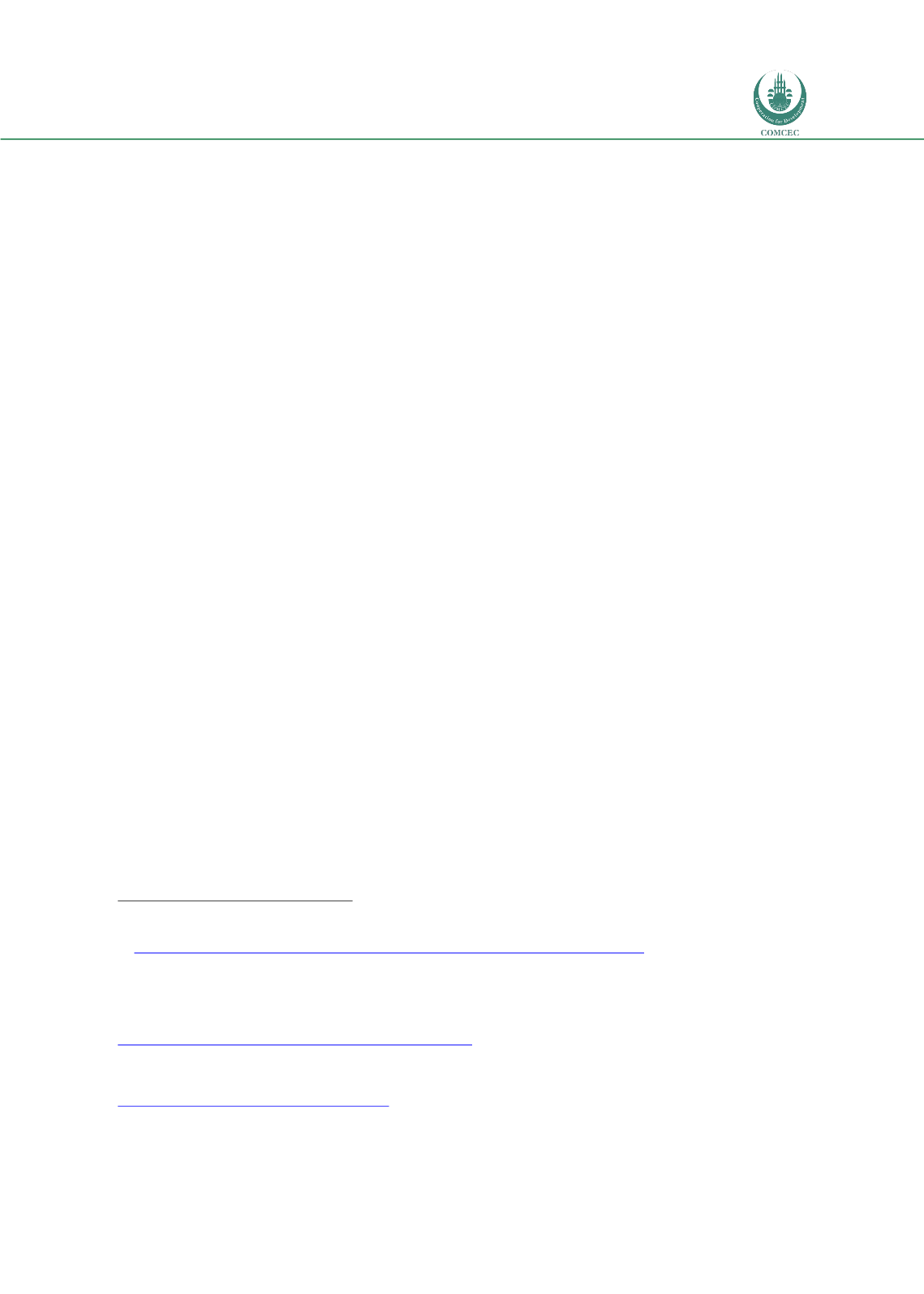

Forced Migration in the OIC Member Countries:
Policy Framework Adopted by Host Countries
105
11 percent of 40 to 45 year olds had not completed basic school.
238
More recently, however,
decreased funding and financial shortfalls have significantly impacted UNRWA schools.
239
Schools have become increasingly crowded, and in the fall of 2015, UNRWA was forced to
consider delaying the start of the school year due to a significant funding shortfall.
240
In recent
years, there has also been a noticeable gap in outcomes for students in- and outside of camps.
While 42 percent of 25 to 30 year olds living outside of camps completed some tertiary
education in 2012, just 20 percent of the same age group inside the camps had done so as of
2011.
241
Health
Health care in Jordan is provided through both public and private systems. Most Jordanians
also carry some form of health insurance provided by their employers. Individuals without
health insurance are able to access public health services at a subsidized rate, while foreigners
must pay a higher fee. For refugees, as in other policy areas, access to health care in Jordan
depends very much on an individual’s nationality and circumstances of entry.
Currently, non-Palestinian refugee groups can access primary health care through clinics run
by UNHCR partner organizations such as Caritas, the Jordan Health Aid Society (JHAS), and the
International Medical Corps (IMC).
242
Iraqis can receive secondary care at government clinics
via a referral from a UNHCR-sponsored clinic. All refugees must possess a valid UNHCR
registration card in order to access the clinics. UNHCR covers costs for emergency visits and
pregnancy services at government or UNHCR-affiliated hospitals. Tertiary treatment must be
approved by UNHCR’s Exceptional Care Committee.
Refugees are also allowed to use the national health care system, but must pay the higher
foreigners’ rate. While the government has made efforts to facilitate access for Syrians and
Iraqis, both groups have seen their benefits reduced as their displacement has become
prolonged. Initially, Syrians were granted free access to care at public health clinics, but
beginning in November 2014, the government reduced coverage for Syrians to the same level
as that provided to Jordanians without insurance (i.e. a nominal fee for services).
243
Syrians
are required to have completed the Ministry of the Interior registration procedure to benefit
from the lower fees. Until August 2015, Iraqis were also allowed to pay the same, lower fees as
uninsured Jordanians due to financial support paid to the Jordanian government by UNHCR.
244
But funding to support health care access for Iraqis has declined,
245
particularly as Syrian
health care needs have burgeoned, and at present Iraqis are no longer eligible to benefit from
subsidized care.
246
238
Tiltnes and Zhang ,
Progress, challenges, diversity: Insights into the socio-economic conditions of Palestinian refugees in
Jordan
23
9 https://www.odi.org/sites/odi.org.uk/files/odi-assets/publications-opinion-files/7605.pdf240
UN News Centre, “Budget woes ‘costly distraction,’ Ban says, urging reliable funding for UN Palestine refugee agency,”
updated May 4, 2016,
http://www.un.org/apps/news/story.asp?NewsID=53852#.V1bedPkrK00241
Tiltnes and Zhang ,
Progress, challenges, diversity: Insights into the socio-economic conditions of Palestinian refugees in
Jordan
242
UNHCR, “Guide to UNHCR Supported Health Care Services in Jordan,” published 2013,
https://data.unhcr.org/syrianrefugees/download.php?id=2862243
Amnesty International,
Living on the Margins
244
UNHCR,
Submission by the United Nations High Commissioner for Refugees For the Office of the High Commissioner for
Human Rights' Compilation Report - Universal Periodic Review: Jordan
, March 2013,
http://www.refworld.org/pdfid/513d90172.pdf; UNHCR Health Unit,
Assessment of Health Access of New Arrival Iraqi
Refugees in Jordan
, August 3, 2015, pg. 3.
245
Hart and Kvittengen,
Tested at the Margins
246
UNHCR Health Unit,
Assessment of Health Access of New Arrival Iraqi Refugees in Jordan
, August 3, 2015, pg. 3.
















